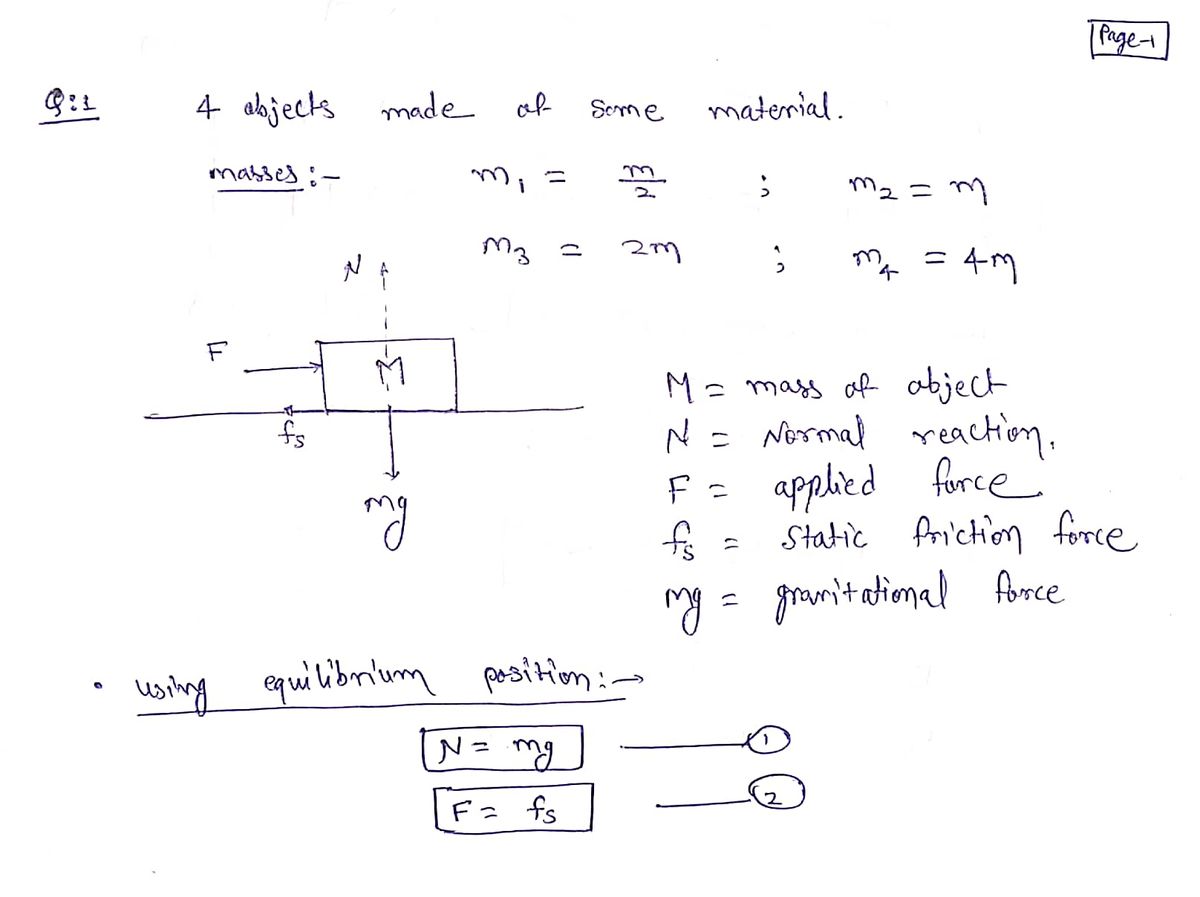Imagine 4 objects made of the same material but with different masses. All systems have the same coefficient of static friction μs. Rank in order from smallest to largest: the minimum applied force required to make the objects move if their masses are: Object 1 = m/2 Object 2 = m Object 3 = 2m Object 4 = 4m imagine three objects with the same coefficient of kinetic friction but each having a different mass. We’re going to push each object with a known force F. Rank the velocity of the objects, from smallest to greatest, after we apply the force F for 4 seconds Now think about a robot pushing an object across a horizontal surface without friction and draw graphs for Force, acceleration, velocity, and position all vs. time for both situations. Now think about a robot pushing an object across a horizontal surface with friction and draw graphs for Force, acceleration, velocity, and position all vs. time for both situations.
Imagine 4 objects made of the same material but with different masses. All systems have the same coefficient of static
friction μs. Rank in order from smallest to largest: the minimum applied force required to make the objects move if their
masses are: Object 1 = m/2 Object 2 = m Object 3 = 2m Object 4 = 4m
imagine three objects with the same coefficient of kinetic friction but each having a different mass. We’re going
to push each object with a known force F. Rank the velocity of the objects, from smallest to greatest, after we apply the
force F for 4 seconds
Now think about a robot pushing an object across a horizontal surface without friction and draw graphs for Force,
acceleration, velocity, and position all vs. time for both situations.
Now think about a robot pushing an object across a horizontal surface with friction and draw graphs for Force,
acceleration, velocity, and position all vs. time for both situations.

Trending now
This is a popular solution!
Step by step
Solved in 5 steps with 5 images








